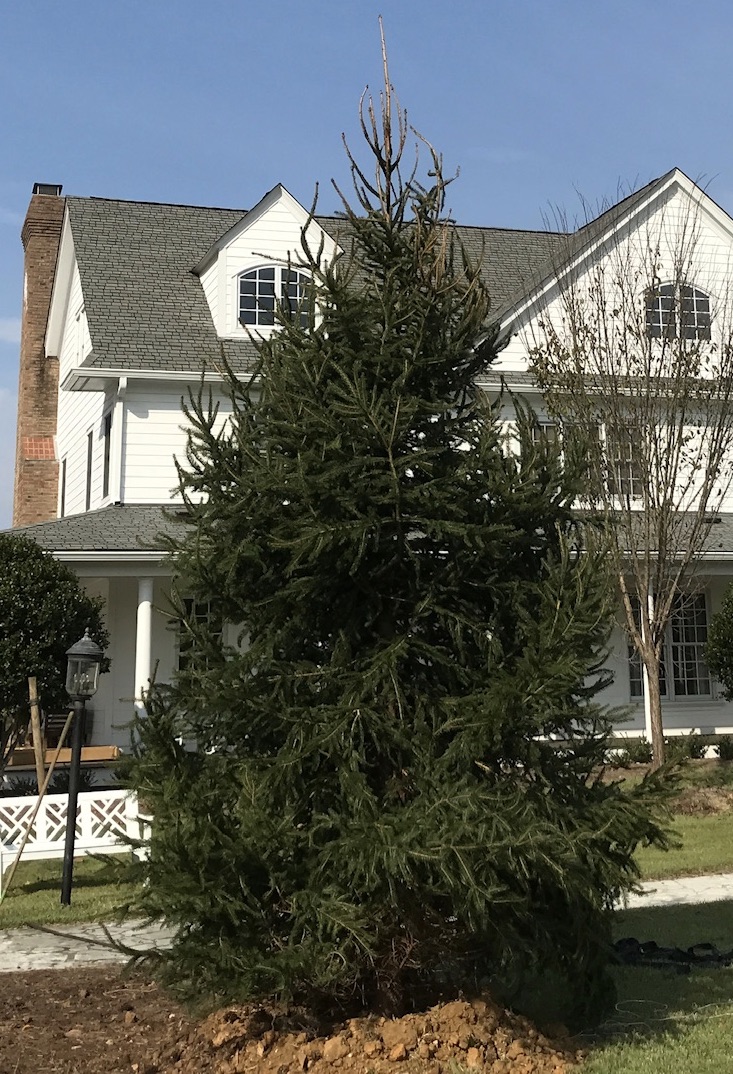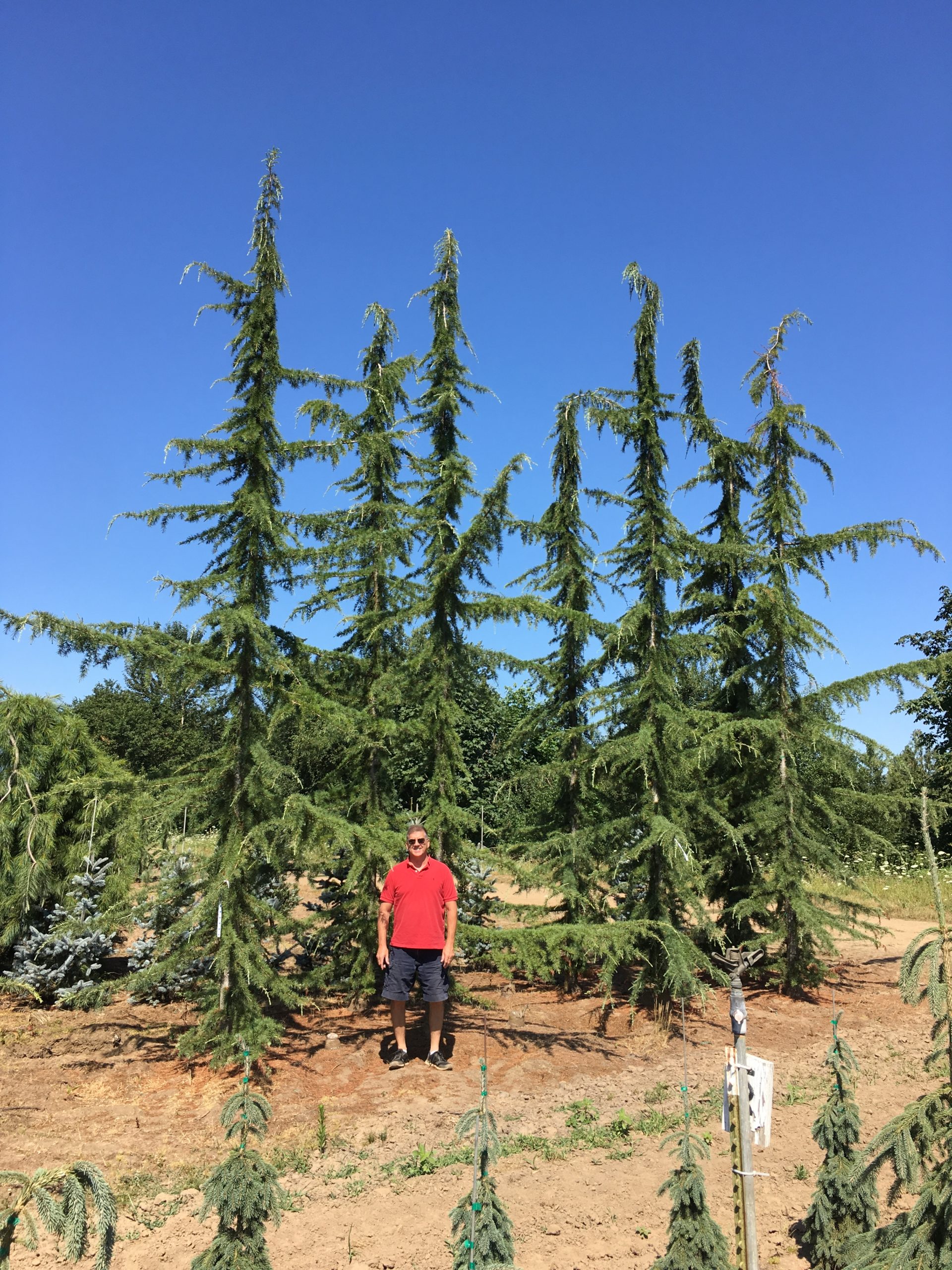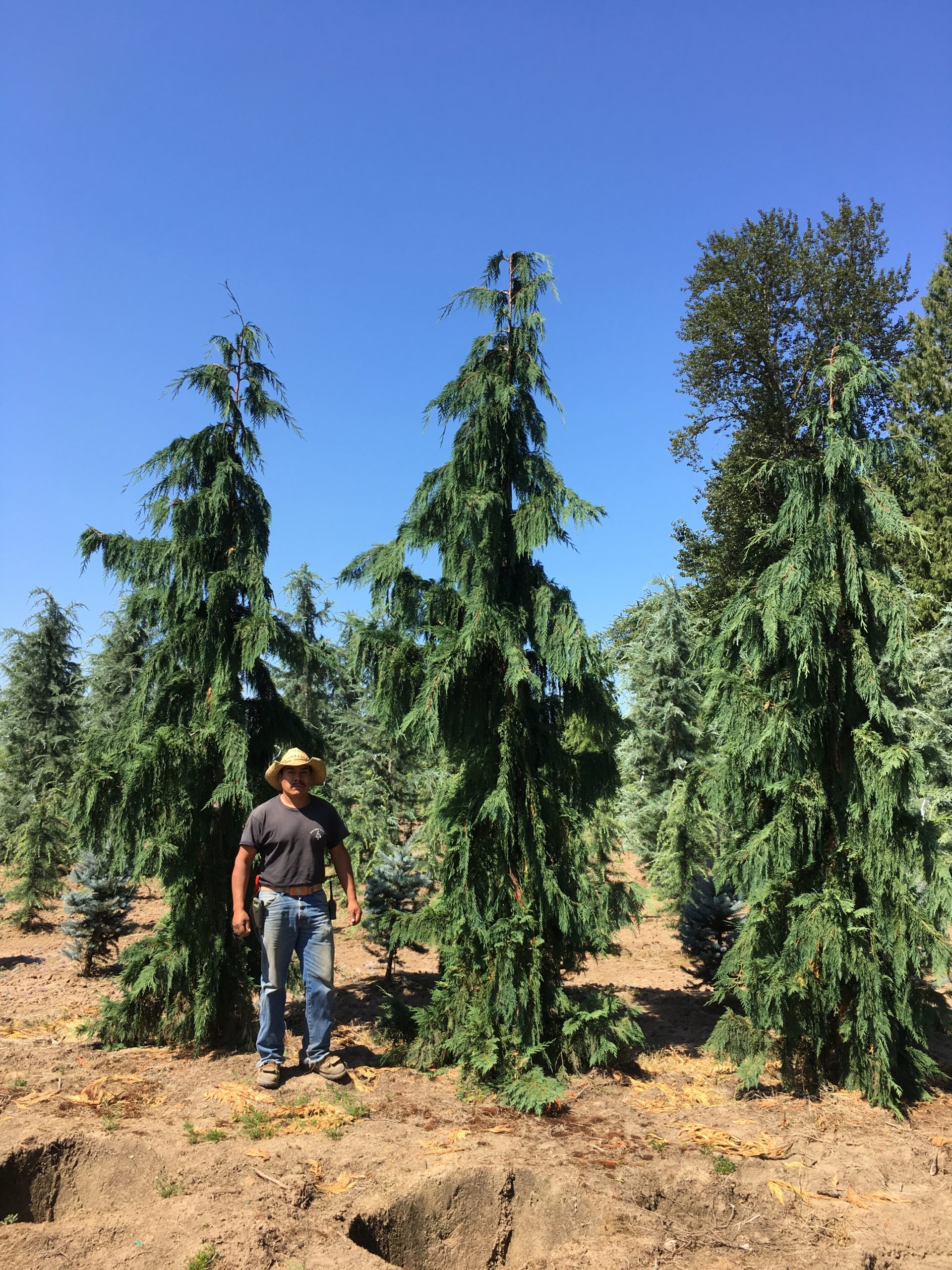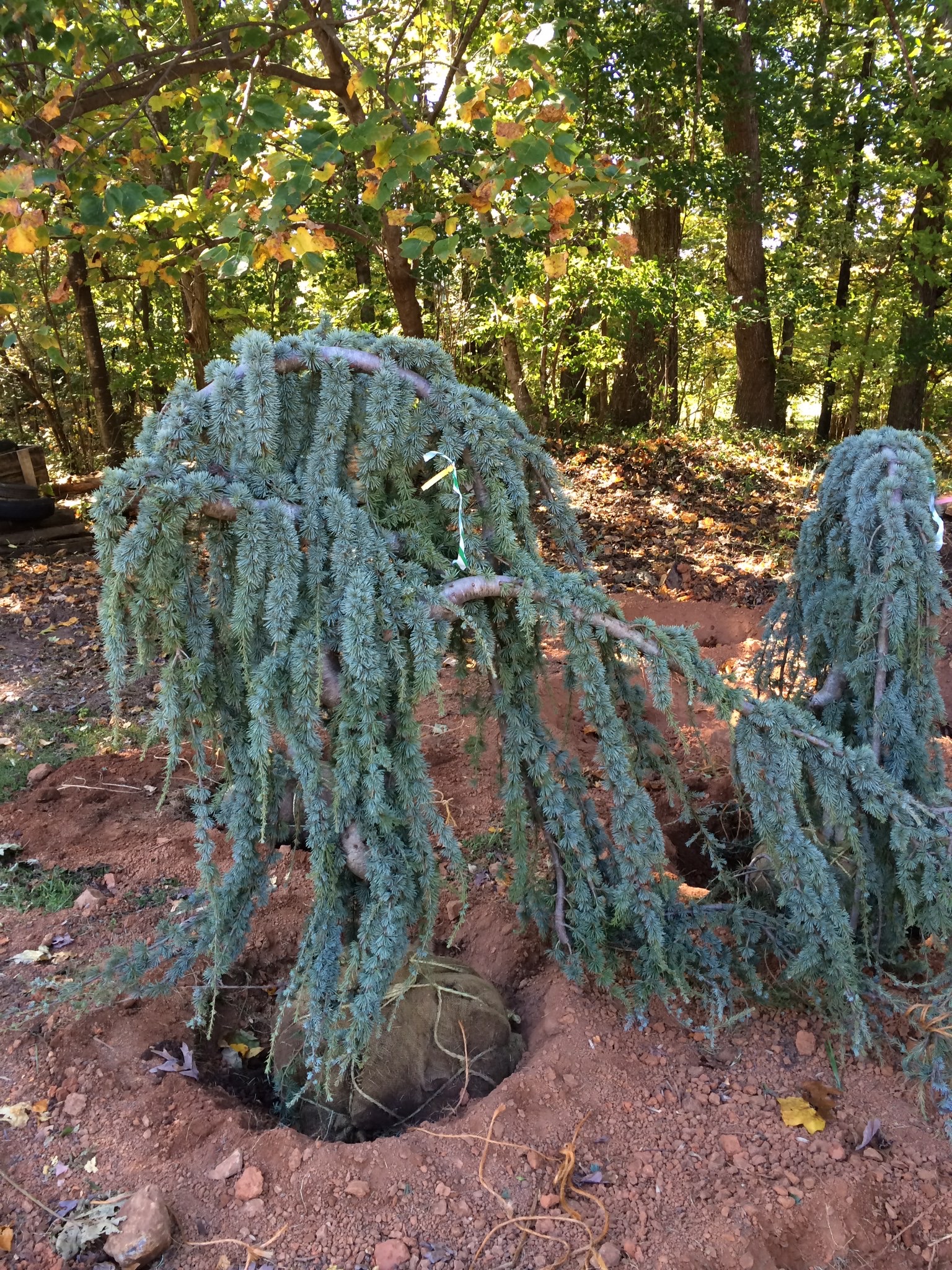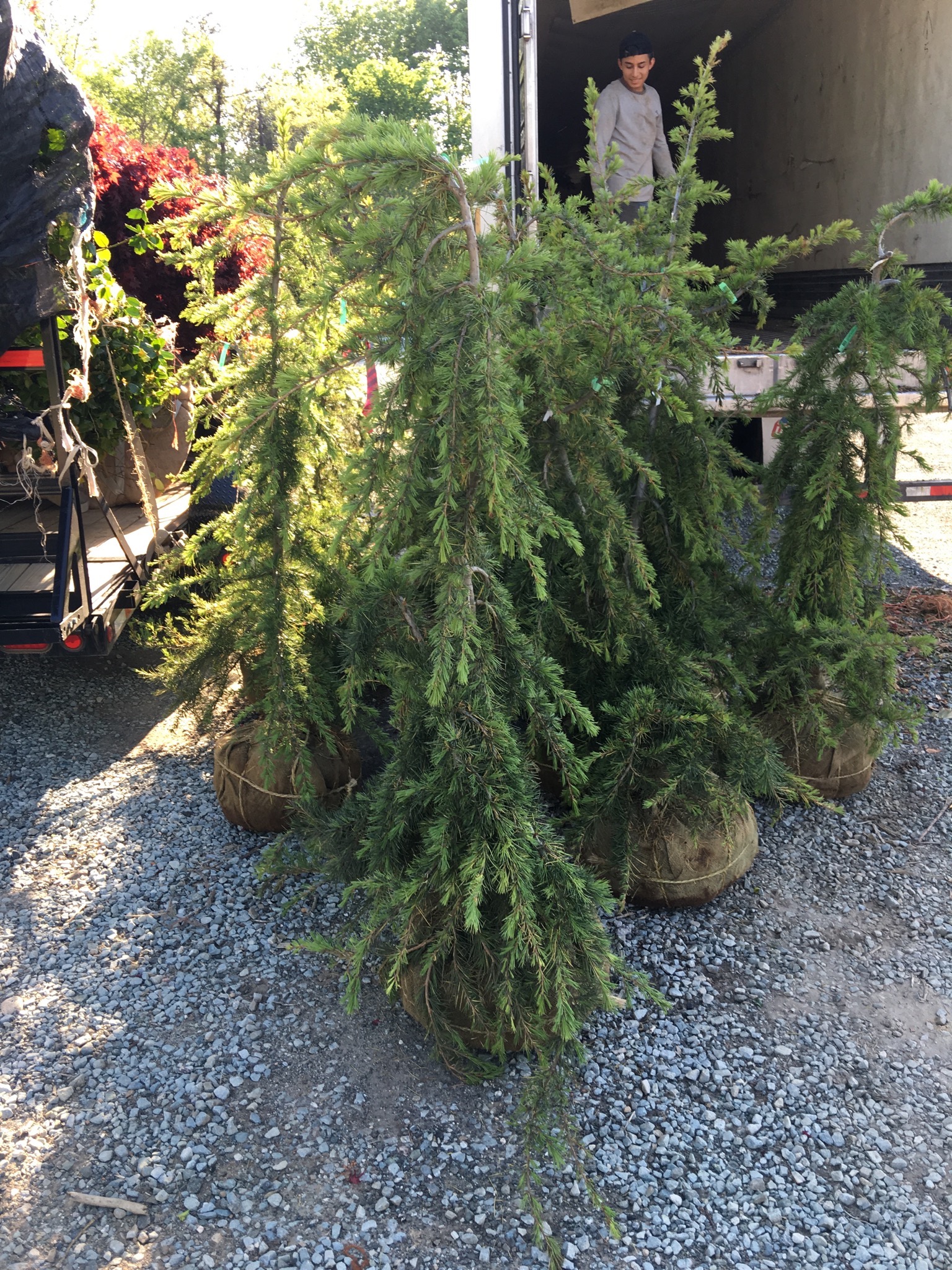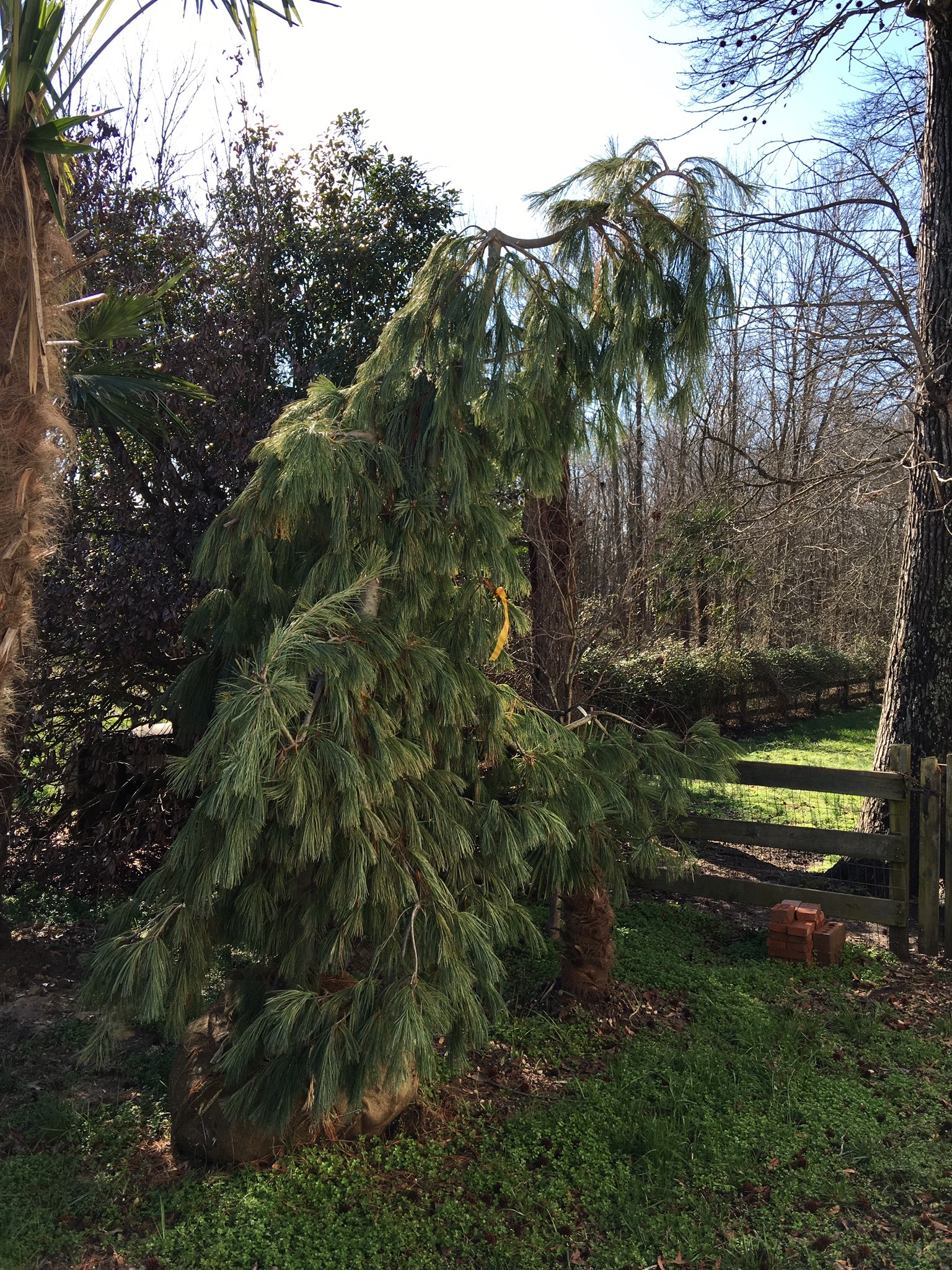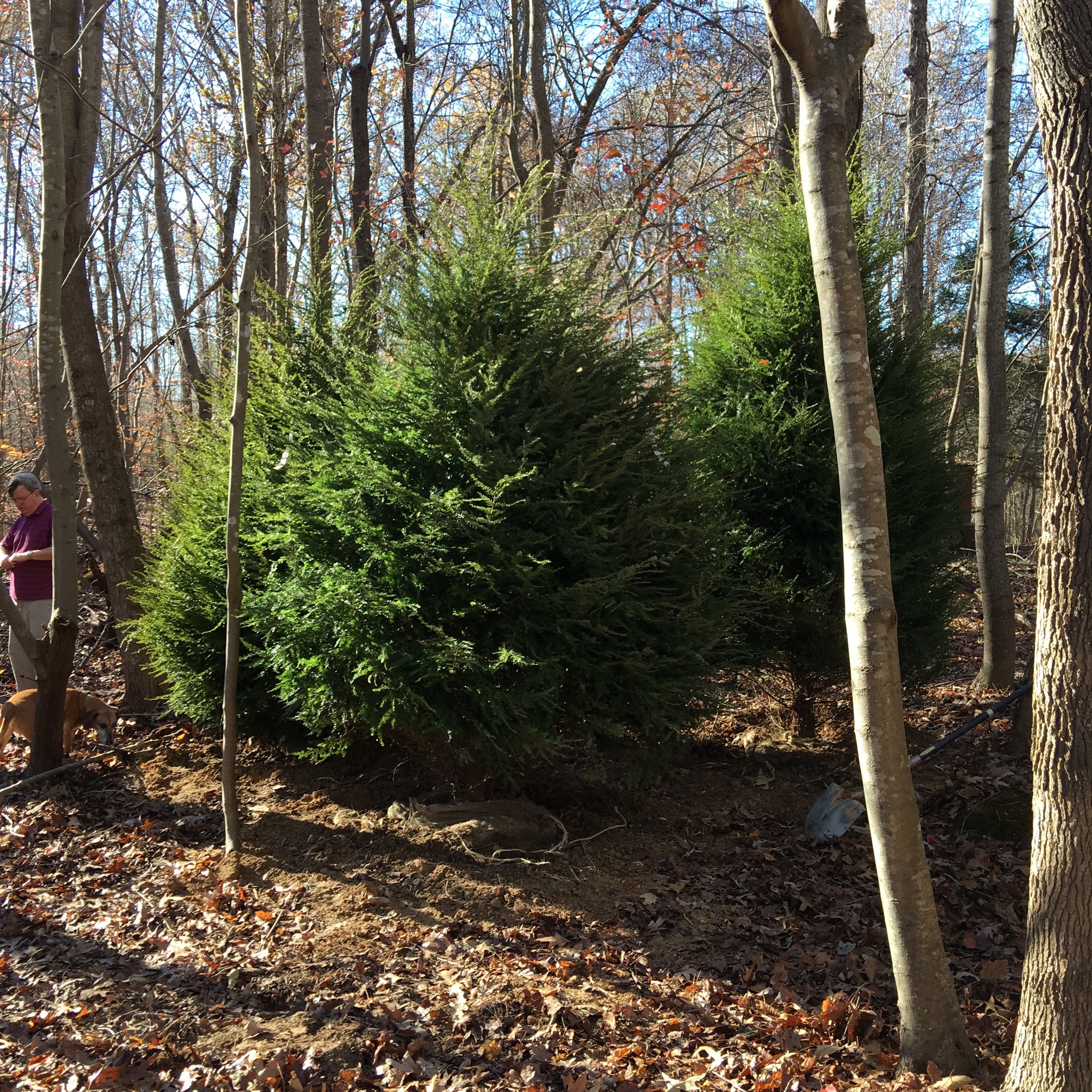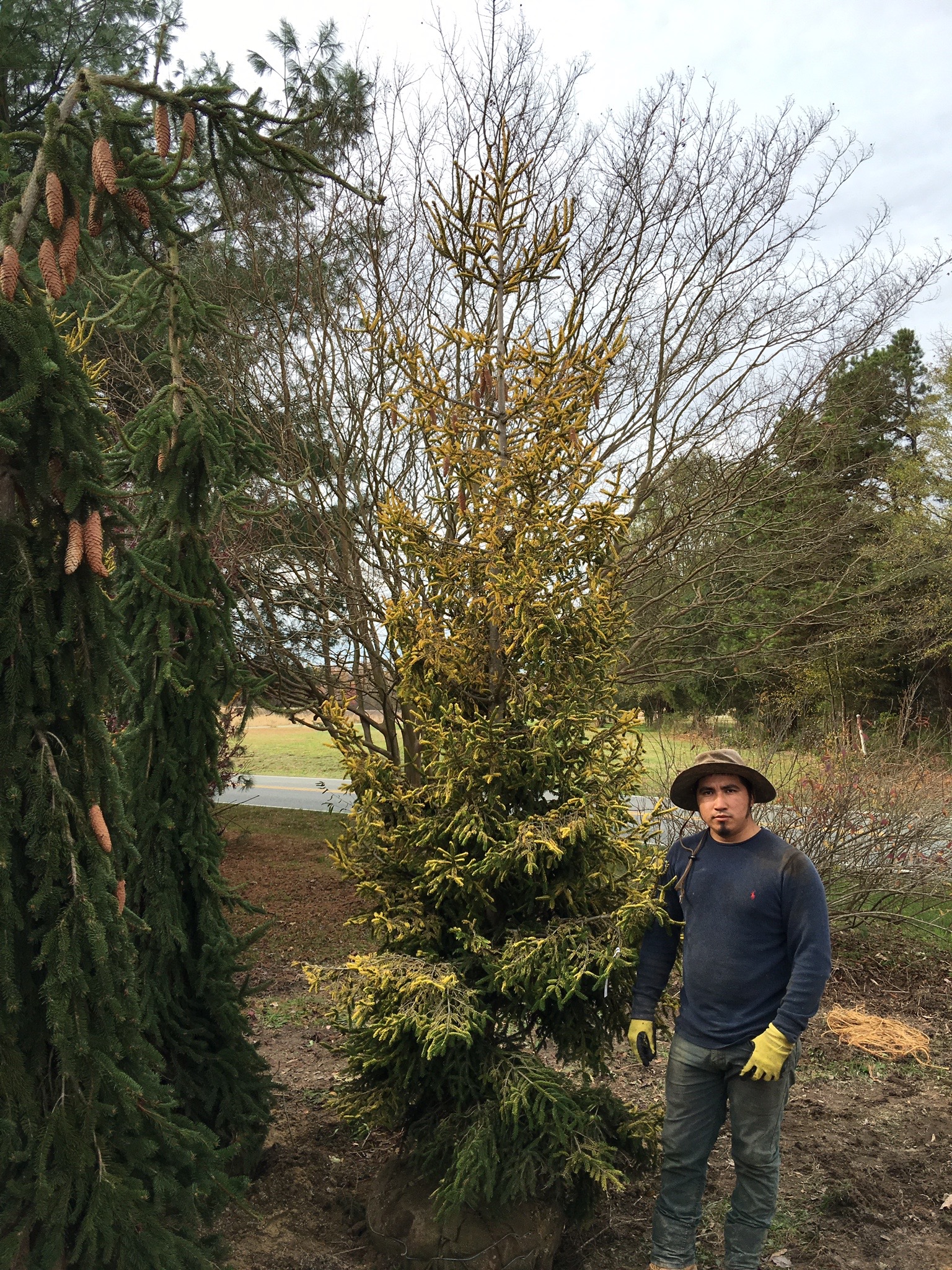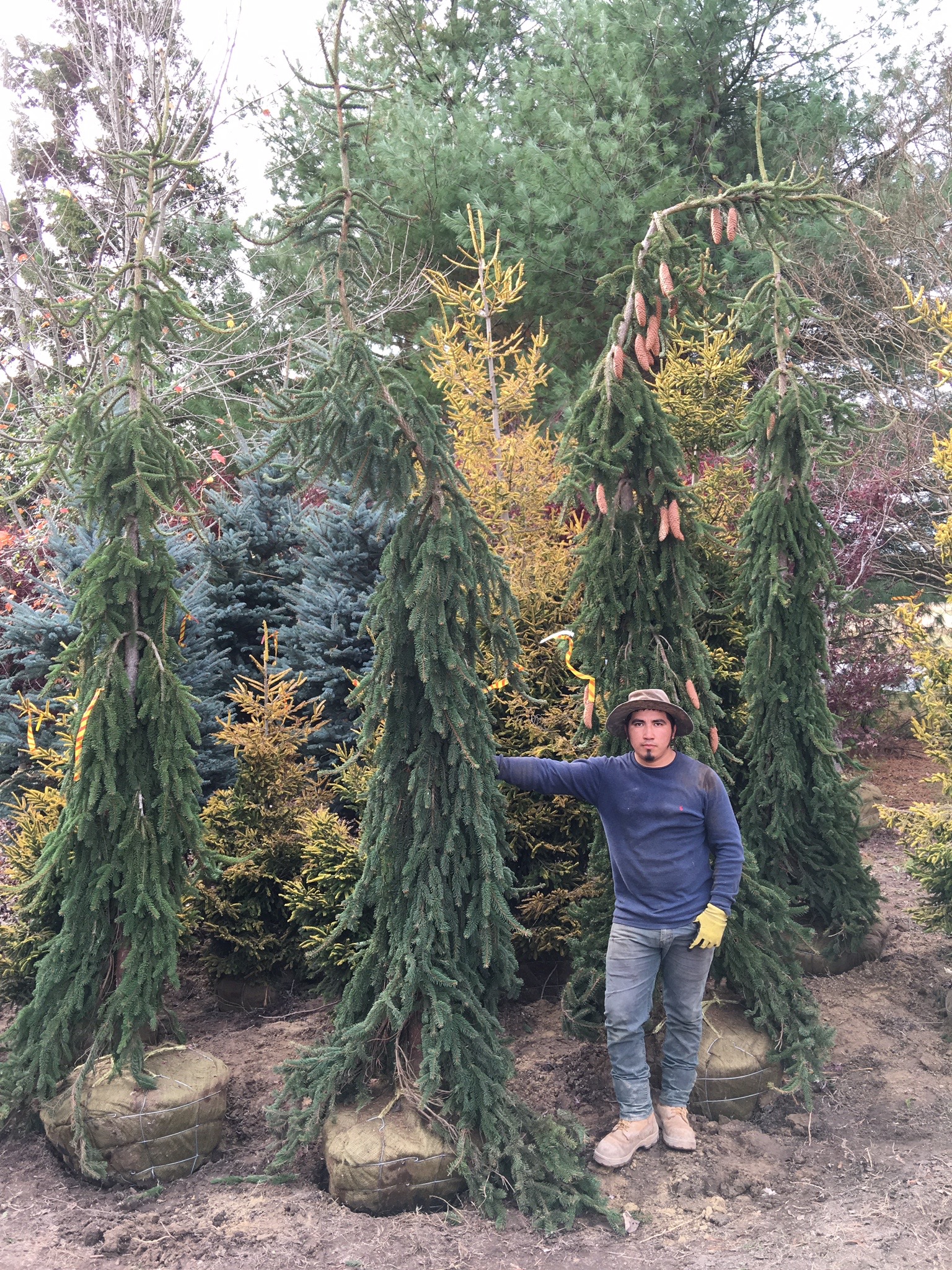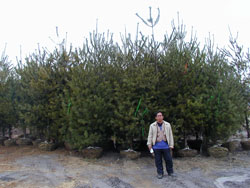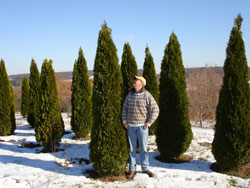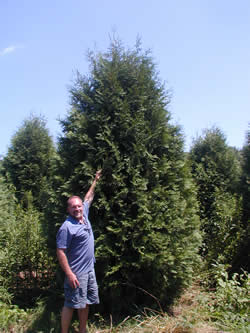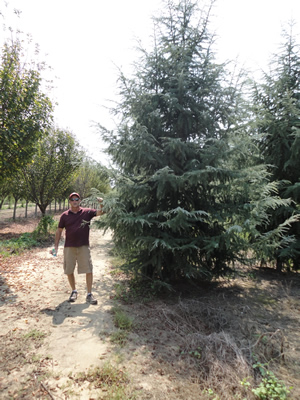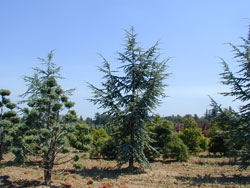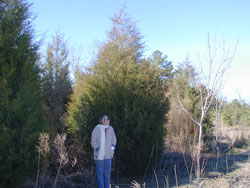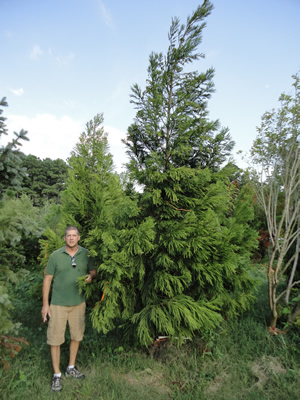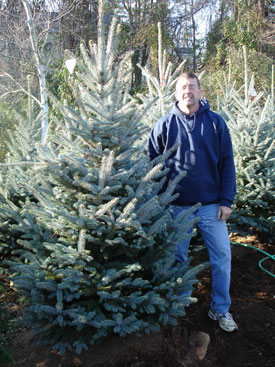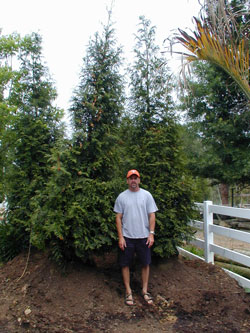Home & Garden Landscapes employs a wide variety of heat-tolerant evergreens and conifers that are suitable for use in the Southern landscape.
Home landscape designs which incorporate some evergreens and conifers provide for a more balanced visual presentation and add variants of foliage and color on a year-round basis.
With many years of working with conifers, we have developed a list we can successfully add to any landscapes including specimen-quality cultivars of Colorado Blue Spruce which thrive in Southern heat and humidity as well as southern natives including Eastern Red Cedar and White Pine.
This Pacific Northwest native does surprisingly well in our Southern climate. We use these to accent and soften high vertical architectural features as well as standalone specimen focal points. We work closely with our Oregon growers to obtain the best quality material for our clients. Weeping Alaska Cedar is quite drought and heat tolerant once established. It prefers sunny and well-drained locations. Availability is limited and is special order only.
Eastern White Pine, a native from Canada into northern Alabama, is a great stand-alone as well as screening plant. Trees retain their lower limbs and exhibit a beautiful blue-green coloration making them a favorite. Once established, Eastern White Pines are drought-tolerant and can handle a good amount of Southern heat.
Emerald Green Arborvitae is favorite landscape plant for corners of properties as well as for screening. It is one of the few narrow and columnar growing landscape plants that do not spread. Limitations include a heavy susceptibility to deer grazing, bagworms and a general intolerance of shade.
Western Red Cedar, long a favorite in the Pacific Northwest, is increasingly available as a landscape screening plant in the Southeast. With its consistent and dense growth habit and freedom from insect pests, Western Red Cedar is worth considering as a landscape screening plant where it is available.
This Southern favorite with it’s feathery needled foliage and blue-green color is highly valued in the landscapes. Drought and heat tolerant as well as moderately fast growing make this an ideal choice for sunnier spots. With many different cultivars available from blues to green and upright to weeping, Deodar Cedar is a good choice for southern landscapes.
Native to Eastern North America, Eastern Red Cedar is hard to beat as a landscape plant. Often overlooked in landscapes, this plant is increasingly being used due to it’s great screening properties, beautiful coloration and drought tolerance. These can be used as stand alone trees, privacy screens or in clusters. Fall “berries” also add interest as well.
With it’s elegant texture, beautiful green needles and fast growth, Cryptomeria is valued as a landscape plant. Plants prefer sunnier locations and good drainage. This plant also gets BIG and some older plants have reached 40 feet tall and 20 or more feet wide so make sure you have the space for it’s spread.
Fat Albert Colorado Blue Spruce holds it’s bright blue color throughout the year and exhibits an unusual tolerance for heat and drought once established. As it’s name implies, it is a fatter cultivar and is great for adding this unusual color and texture to southern landscapes.
Full sun to partial sun locations are ideal and care must be given to keep this plant from getting too dry during long droughts. Home and Garden Landscapes grows this cultivar and highly recommends it for inclusion in the landscape.
Green Giant is a great choice for evergreen screening on properties that have the room for it’s wide spread. From full-sun to partial shade, this coniferous evergreen is hard to beat. Created by crossing Leyland Cypress and Western Red Cedar, this unique plant combines some of the positive attributes of both of its parents while leaving behind some of the negative traits of Leyland Cypress.
Green Giant is fast-growing with a strong root system which eliminates the problem Leyland Cypress has with its tendency to blow over in storms and heavy ice and snow. The plants inherited the uniformity of the Western Red Cedar and are more tolerant of bag worms which plaque Leyland Cypress as well.
After its introduction, deer and bag worms largely left Green Giant alone. Reports are now coming in that indicate the deer are warming up to the taste of Green Giants and some trees have been affected by bagworms, particularly if they are stressed.
That aside, it is a great screening plant and we highly recommend you consider it if you have the room. Trees can spread 10 or more feet in width at the base and can easily reach 30 foot plus tall.
